Update 4/4/16: The Gateway Pacific Terminal project has requested a temporary suspension of the proposal’s environmental review process.
If the coal industry gets its way, the Columbia River Gorge will soon host dozens of loaded coal trains each day, carrying as much as 96 million tons annually to export terminals in Washington. It’s an amount of coal so vast that a year’s worth of the cargo would dwarf even the biggest landscape features in the region and overshadow the tallest structures in nearby Portland, Oregon. We’ve long known that burning coal is harmful to air quality, and now a recent study conducted in the Gorge shows that even just transporting it in the usual way—in uncovered, open-top rail cars—also has serious air quality consequences.
Columbia River Gorge study
The research, led by Daniel Jaffe, professor of atmospheric and environmental chemistry at the University of Washington, measured diesel particulate matter and coal dust released by the coal trains that currently traverse the railways in the Columbia River Gorge. Both particulate matter and coal dust contain toxic, microscopic pollutants harmful to our health.
Jaffe and his colleagues set up monitoring equipment next to a rail line between the towns of Lyle and Dallesport, Washington, and took measurements every 10 seconds of the respirable particulate matter emitted by both ordinary freight trains and coal trains. After measuring emissions from 367 trains over a 2-month period, the scientists found that diesel-powered open-top coal trains emitted twice as much particulate matter as diesel-powered freight trains. Notably, coal dust made up approximately half of the coal train emissions.
To date, few studies have evaluated air quality impacts for people living near rail lines where coal is transported. The Jaffe study, which was published in the journal Atmospheric Pollution Research in November 2015, signals that coal dust emitted in the Columbia River Gorge could cause potentially severe health consequences.
The study’s findings are especially disquieting in light of the fact that two large coal export facilities have been proposed for Longview and Bellingham, Washington. Gateway Pacific Terminal at Cherry Point would be the largest coal facility in North America, capable of handling 48 million tons of coal per year. The Millennium Bulk Terminals at Longview plan to export 44 million tons of coal. If the proposals are successful, 17 more loaded open-topped coal trains per day would travel through the Columbia River Gorge. These open-top trains would litter the ground and air with coal dust not only in the Gorge but in each area they travel through on the way to their destination, including Idaho, Spokane County, Eastern Washington, Skagit and Whatcom Counties, Snohomish County, King County, Tacoma and Olympia, and Southwest Washington. (As The Oregonian has pointed out, it’s possible that coal trains would be routed through Oregon as well.)
A massive quantity: Thousands of pounds over hundreds of miles
Coal is transported in uncovered hoppers, open-top rail cars that typically carry 100 to 120 tons of coal apiece. According to BNSF railway testimony before the Surface Transportation Board in 2009, an estimated 645 pounds of coal dust can escape from each rail car over the course of a 400-mile trip. Much of it accumulates on and near the railroad tracks, but wind and stormwater spread coal dust over larger areas of land and water.
Coal trains are inherently dirty, and there doesn’t appear to be a viable fix. In non-peer-reviewed studies conducted by BNSF, the rail company claimed that shaping the coal like a loaf and applying chemical agents called surfactants to the top of the coal results in an 85 percent decrease in coal train dust. That means that even under a rosy scenario in which the coal loads remain somehow undisturbed during transit, the average single train car would still release a full 97 pounds of coal dust during its journey. For a 125-car coal train, that’s 12,125 pounds over just 400 miles.
Even under good conditions, the average 125-car coal train would emit 12,125 pounds of coal dust over just 400 miles of rail travel.
But coal traveling to the proposed Washington terminals would travel a full 1,367 miles by rail, emitting even more coal dust. Nearly all the open-top coal trains observed by the Jaffe study emitted coal dust, even though the trains had already traveled more than 900 miles from the Powder River Basin in Wyoming and Montana to the site of the study.
Many factors can impact the hold of surfactant on coal, including high train speeds, wind speed, and rough handling during transport. Powder River Basin coal—the type that is transported through the Pacific Northwest—is particularly susceptible to breaking down, “virtually independent of how the coal is transported or handled,” according to one handbook on coal analysis. In fact, four of the coal trains observed in the course of Jaffe’s study emitted such large, visible plumes of coal dust that the study labeled them “super-dusters.” If super-dusters pass through the Gorge at the same rate over the course of the year, that’s about 24 super-duster trains passing through the region each year.

Dirty All Over by Aaron Hockley used under CC BY-NC-ND 2.0
A toxic quality: Diesel particulate matter and coal dust
The quantity of particulate matter is not the only concern; its composition is also particularly toxic. Consider what coal trains deliver to the rail-side communities they pass through. According to Oregon Physicians for Social Responsibility, diesel particulate matter (DPM) is a mixture of soot, black carbon, nitrogen, sulfur, metals, acids (such as sulfuric acid), and other toxic substances like polycyclic aromatic hydrocarbons (PAHs). These tiny particles travel deep into the lungs’ alveoli, the smallest compartment of the lungs, where they enter the bloodstream and can contribute to various diseases in the lungs and other organs.
42% of fine particulate matter released by all trains in the Columbia River Gorge was black carbon.
The US Department of Health and Human Services and the World Health Organization identify particulate matter as carcinogenic to humans. Increased levels of particulate matter are associated with many ill health affects, including higher rates of asthma or worsening asthma; increased lung and breast cancer rates; lung, heart, and immune system abnormalities in children; higher rates of heart attacks and strokes; and higher childhood rates of neurodevelopmental disorders. The elderly, pregnant women, children, and people who already have lung diseases such as asthma are at special risk.
Diesel particulate matter (DPM) spews forth from the diesel engines of train locomotives, as well as ships and diesel trucks. A substantial amount of DPM is black carbon, the major component of soot, which absorbs and transports PAHs and other toxic compounds that contribute to heart and lung disease. Previous studies have found that black carbon makes up 45 to 52 percent of fine particulate matter (particles less than 2.5 micrometers in diameter, which are believed to pose the greatest health risks). The Jaffe study found that on average, 42 percent of fine particulate matter released by all trains in the Columbia River Gorge was black carbon.
The data collected by Jaffe and colleagues suggests that fine particulate matter emissions from coal trains are composed of approximately half diesel particulate matter and half coal dust. Coal dust, a powdered form of coal created by mining and transportation activities, introduces additional health concerns. Inhaling coal dust can lead to difficulty breathing, chronic bronchitis, and emphysema. It contains particulate matter including minerals such as silicates, which scar the lungs and reduce oxygen intake. (It’s the same stuff that in enclosed environments like a mine causes black lung disease for an estimated 70 percent of coal miners during their lifetimes.)
Plus, according to the Washington Department of Health’s comment letter on the proposed Gateway Terminal, coal dust contains lead, mercury, and arsenic. Lead and mercury are neurotoxins that affect the nervous system, and arsenic is a carcinogen linked to cancers of many organ systems. These toxins can enter the body through breathing in coal dust or eating food and fish harvested from land and water contaminated by coal dust.
The public’s chance to weigh in
Jaffe’s coal dust study illustrates that the risks from coal dust blowing off trains are real, persistent, and dangerous. Enormous quantities of toxic coal dust and diesel particulate matter would cost communities all along the rail route from the Powder River Basin in Wyoming and Montana to the proposed export terminals on the coast at Longview and Bellingham.
This year, residents of the Pacific Northwest will get to see the first drafts of the official environmental reviews for these huge terminals. It’s probably the last best chance for the public to voice their concerns about the proposals and the many ways that coal trains—and the dust they cough up all along their routes—put Northwest communities, land, and water at risk.

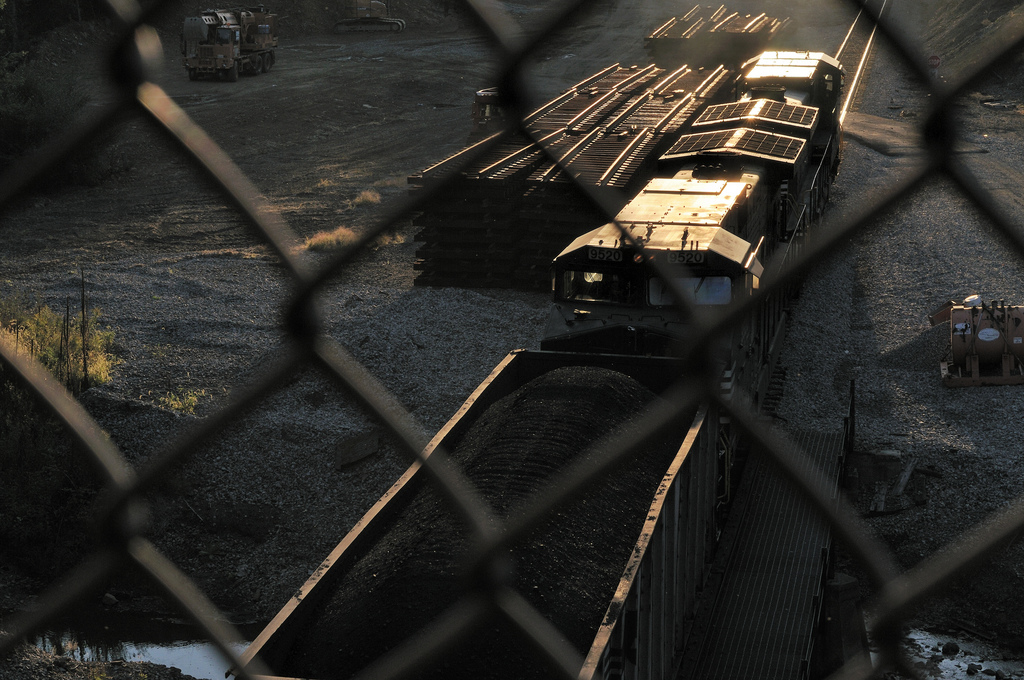
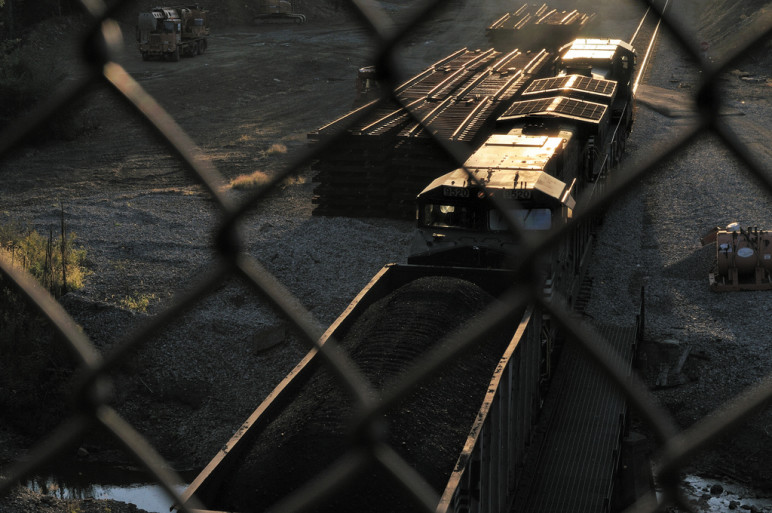



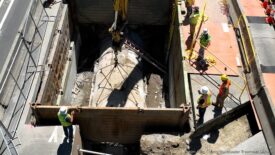
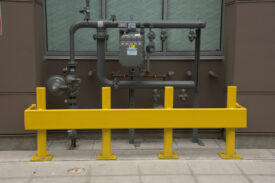
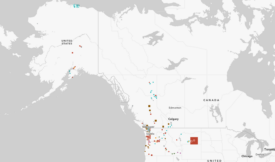
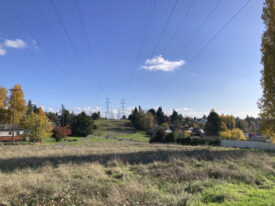
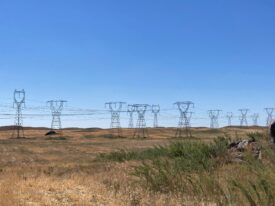

Mel Belding
Excellent information about the frightening prospect of these environmental accidents waiting to happen if the dying coal industry gets its way. It would be useful for the residents of Seattle to know just what kind of doses of coal dust and diesel they are getting each and every day as the oil and coal trains run through downtown and near to some very expensive condos. We need to get people to understand how close they are to this stuff not to mention the idea of an oil train exploding in the tunnel that runs under Seattle downtown.
joel smith
I have lived around coal trains my entire life and have never seen much coal dust come off them and me and my family members and everyone else i know have no breathing problems. My children have no breathing problems. Your manufacturing plants and your vehicles you drive pollute the air more then a locomotive or coal dust. You know I dont have a phd but i do have common sense, come on people, I can not believe people believe this garbage.
John Young
Important to separate emissions from the trains (especially the engines) versus the cargos to emphasize the health hazards of just the trains themselves apart from their cargos.
Is there a difference in emissions depending on the length of the train, depending on the weight of the train? Between a engine pulling empty cars versus loaded cars.
We also need ways to communicate actual health harms versus health “risks.” To communicate that just the engines themselves actually harm our health no matter what they’re carrying, whether or not there’s any accident or adverse event such as a leak or derailment.
Here on the south most tip of Texas (think South Padre Island), Centurion Midstream Group plans to run two Union Pacific trains a day through a number of our local communities starting the Summer of 2017. They say one train a week, 100 rail tanker cars each, and have disappeared the numbers (160,000 barrels of condensate a day) that translate into two trains a day, 120 cars each.
Check out saveRGVfromLNG on Facebook. We started out fighting LNG companies targeting our local Port of Brownsville in 2014 (three companies presently undergoing the FERC rubber stamp process) but are now adding highly flammable condensate trains to our list of concerns (also oil trains, since our Port’s increasing its oil export capabilities) and fracked gas pipelines (to feed the LNG operations and Mexico’s fracked gas hunger).
Fred Hodge
It strikes me the coal train/coal use issue is similar to the climate, ie; global warming issue.. A handful of very well funded special interest people and their political lackeys push for coal use, while simultaneously denying global warming. They are the same people in both these issues.. Isn’t it time to point out who they are, publish names, and what they stand to gain at the expense of our health and the health of the environment..
Tracy Bowser
Thank you for this research. I was trying to calculate the miles traveled from the Powder River Basin to Longview, so I’ll go with 1,200. I was working on calculating how much coal dust would escape based on BNSF’s figures of around 645 pounds/400 miles and allow their claim of 85% reduction by spraying surfactants. I calculated conservatively about 106,797,000 pounds of coal lost along the track annually if the route is about 1,200 miles. Thank you!
Tarika Powell
Hi Tracy,
Thanks for reading and thank you for your comment! I wanted to point out that the amount of coal dust that escapes is not uniform over the course of the trip. The 400-mile trips that were studied by BNSF showed that more coal dust is lost earlier on in the trip, and then the quantity decreases. On the other hand, the decrease can’t be assumed to continue in a linear manner beyond the 400 miles they studied because of a couple factors, including:
1. the effectiveness of the surfactants can wear off over the course of the trip, leading to more dust at point C than point B;
2. variable train speed;
3. geography factors and wind speed;
4. super dusters as described in the article.
So, just be aware that the amount of coal dust loss may not be equal across the whole trip. We need more data across longer trips so hopefully the studies will continue and expand in scope.
Stephen
What about the new car covers?
Tarika Powell
Can you give more specifics about what you’re referring to? Thanks!
Dave sharpe
I live near the train tracks. On Washington side. Of the gorge. I windsurf and park my car within about 100 feet of the tracks about 70 days per year. The bank near the tracks does not show a black coal dust build up. I have never seen any dust accumulation on the ground where we park. In the sixties train tracks and areas close by were quite black. I traveled coast to coast by trains multiple times back then. Now the areas around the tracks in the gorge are not all black end. Yes things have gotten much better. There are almost no homes located within 100 feet of the tracks. Dust does defuse after a distance the ground level amount is much much lower. The health impacts are much lower than than the article indicates. Require surfactant covering of all cars causing 85 percent reduction is a mandate.
Look at car,truck and tire dust emissions from hwy 84 my guess is it will be a number of times higher than the trains. My guess is train emission per freight ton/mile is much lower than truck freight ton/mile. Freight trains non coal have emissions of carbon dust higher than surfactant coal contribution. One coal train emissions is about the the emissions from a twofreight trains.
More coal trains will not make the gorge a blackened eye sore it won’t have a visual impact.
That said don’t move close to the rail road tracks if you have a health worry. I would think 1000 feet away from the tracks be much better choice to live at. Same goes for hwy 84.
Don’t worry the impact on the gorge will minimal.
Dave Sharpe